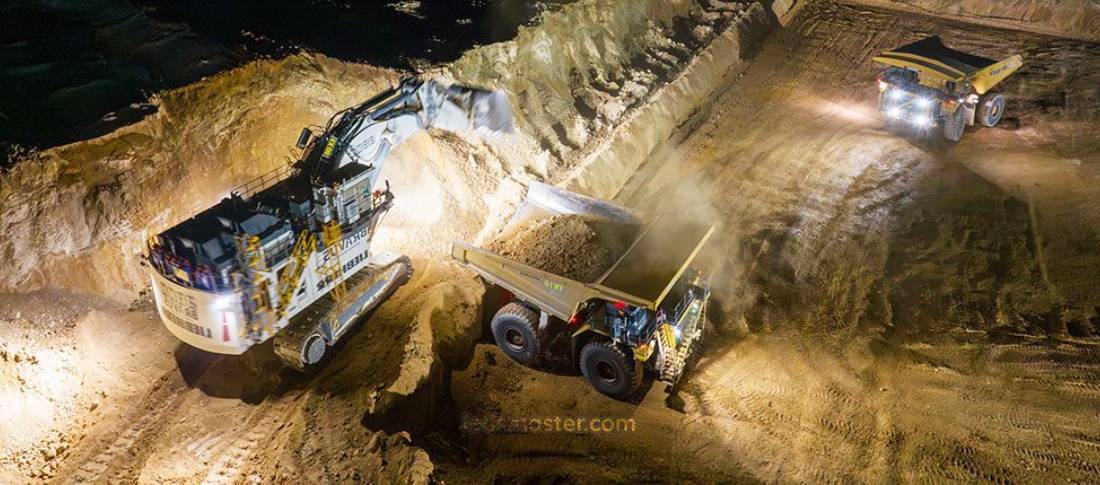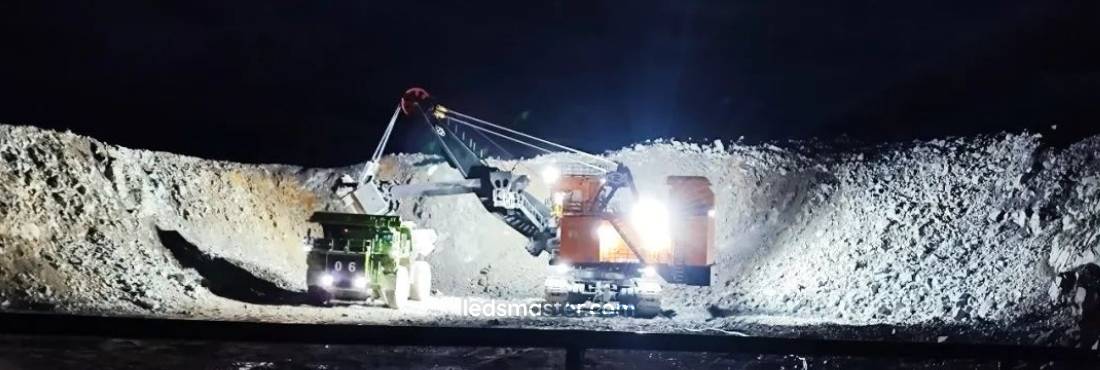In the demanding world of mining, every detail matters—from safety to efficiency. Did you know that the color temperature of your lighting can significantly impact visibility, mood, and performance? Imagine cooler lights, simulating daylight, keeping your team alert and focused, reducing eye strain in those challenging environments.
Get your complimentary lighting design today
In mining operations, lighting plays a role in enhancing visibility and promoting worker safety. Mining environments are typically dark, whether underground or in surface mines, and the right lighting ensures smooth and effective operations. One often overlooked aspect of lighting is color temperature, which affects how light is perceived, the overall atmosphere, and the workers’ ability to perform tasks safely and efficiently. Understanding color temperature and its effects is crucial in creating optimal lighting conditions for mining sites.
Table of Contents
ToggleCooler color temperatures, typically between 4000K and 6500K, simulate daylight, enhancing visibility and providing a more alert atmosphere. Such lighting can reduce eye strain and improve focus, especially in environments with challenging visibility conditions. In contrast, warmer temperatures, below 3000K, create a more relaxed atmosphere but may not be suitable for high-alert tasks where optimal visibility is essential.
The choice of color temperature also affects mood and performance. Cooler light can stimulate alertness, promoting productivity in fast-paced environments like active mining sites. Conversely, warmer light might be more appropriate for break areas or administrative spaces, fostering comfort and relaxation. Striking the right balance is essential to create an environment conducive to both productivity and well-being.

Cooler color temperatures, typically between 4000K and 6500K, simulate daylight, enhancing visibility and providing a more alert atmosphere. Such lighting can reduce eye strain and improve focus, especially in environments with challenging visibility conditions. The brightness and clarity associated with cooler lights help workers to identify hazards quickly and carry out tasks with greater precision. This is particularly beneficial in active mining sites where safety is a top priority.
In contrast, warmer color temperatures, below 3000K, create a more relaxed atmosphere. While this type of lighting can foster a sense of comfort, it may not be suitable for high-alert tasks where optimal visibility is essential. Warm light can lead to decreased alertness, which may impair performance during critical operations. Therefore, understanding the context in which lighting is applied is crucial for maintaining safety and productivity.
The choice of color temperature also affects mood and performance. Cooler light can stimulate alertness, promoting productivity in fast-paced environments like active mining sites. This stimulation is vital in ensuring that workers remain engaged and efficient throughout their shifts. Conversely, warmer light might be more appropriate for break areas or administrative spaces, fostering comfort and relaxation. Providing areas with varied lighting types can help manage stress and fatigue, contributing to overall well-being.
By carefully considering the specific needs of different areas within a mining operation, managers can implement lighting solutions that enhance safety, efficiency, and worker satisfaction. This holistic approach ensures that both operational effectiveness and employee health are prioritized.
In underground mining operations, where darkness prevails and visibility can be severely limited, the recommended color temperature typically falls within the cooler range, around 5000K to 6000K. This range mimics natural daylight, enhancing visibility and enabling workers to identify potential hazards. The cooler light allows for better color differentiation, which is crucial for recognizing various minerals and materials within the mine.
The use of cooler color temperatures can also enhance contrast, making it easier for workers to see details and discern features in the surrounding environment. Properly illuminated underground spaces can reduce the likelihood of accidents and ensure that workers remain aware of their surroundings. Moreover, utilizing lighting systems that maintain consistent color temperature across all areas can minimize visual strain, enabling miners to work more efficiently and safely.
Surface mining presents unique challenges and lighting needs. Depending on the specific tasks being performed, different color temperatures can be more suitable. For general site illumination and earthmoving activities, a color temperature around 4000K to 5000K is often recommended. This range provides adequate visibility while minimizing glare, allowing workers to focus on their tasks without distraction.
For specific operations, such as drilling or loading, cooler temperatures closer to 6000K may enhance visibility, allowing for better detail recognition and improving safety. Additionally, in operations that require color differentiation, such as identifying various materials, higher color temperatures can improve visual acuity and accuracy.
Conditions like weather, time of day, and dust levels can influence how light is perceived. Selecting lighting systems that can adapt to these changing conditions ensures that color temperature remains effective in enhancing visibility and safety throughout the day.

The appearance of materials is significantly influenced by the color temperature of lighting used in mining operations. When the lighting conditions change, so too does the perception of color and texture, which can impact identification and quality control processes.
In mining, the accurate identification of minerals and materials is paramount. Variations in color temperature can alter the way materials appear under light. For instance, a warm light may make certain minerals appear dull or washed out, while cooler light can enhance their vibrancy and detail. When working with valuable materials, it becomes critical to choose lighting that reveals the true characteristics of the materials being processed or extracted.
Color rendering index (CRI) is another aspect to consider when selecting lighting. A higher CRI indicates that colors will appear more true to life under a specific light source. For mining applications where accurate color perception is necessary, choosing lighting with a high CRI in conjunction with the appropriate color temperature can lead to better decision-making and operational outcomes.
The ability to render colors accurately can also impact quality control processes within mining operations. For example, when inspecting ore quality or processing materials, the lighting used should facilitate clear differentiation of shades and tones. If workers are unable to perceive subtle differences due to inadequate lighting, it may lead to errors in judgment and potentially costly mistakes.
In processing facilities, where materials are sorted and evaluated, consistent lighting with appropriate color temperatures helps maintain accuracy in inspections. Implementing smart lighting solutions that allow for adjustable color temperatures can also provide flexibility in meeting different operational needs throughout the mining process.
The effects of color temperature extend beyond visibility and material appearance; they also influence the psychological and physiological well-being of workers. Exposure to cooler light can enhance alertness and concentration, while warmer light can create a sense of calm. In mining, where workers often face physically demanding and mentally taxing tasks, the lighting environment can contribute to overall morale and productivity.
Choosing the right color temperature not only improves immediate working conditions but also fosters long-term well-being among workers. Well-designed lighting solutions can help mitigate fatigue and reduce the risk of accidents associated with decreased focus and visibility.
By understanding the interplay between color temperature and mining environments, operations can better tailor their lighting solutions to meet specific needs, ensuring a safe and productive workplace for all.
Smart lighting systems, equipped with sensors and controls, can adjust color temperature based on specific conditions such as time of day, task requirements, and environmental factors. This adaptability ensures that lighting remains effective, improving visibility and comfort for workers throughout their shifts.
Additionally, these systems can provide real-time feedback on energy consumption and lighting performance, allowing for continuous optimization. By leveraging technology, mining operations can enhance not only safety and productivity but also sustainability, as energy-efficient solutions reduce overall operational costs.
Selecting the appropriate color temperature for different mining applications can enhance safety and productivity, ultimately contributing to the overall efficiency of operations. By considering the effects of lighting on both the physical environment and the psychological well-being of workers, mining operations can create a lighting strategy that supports their unique needs.